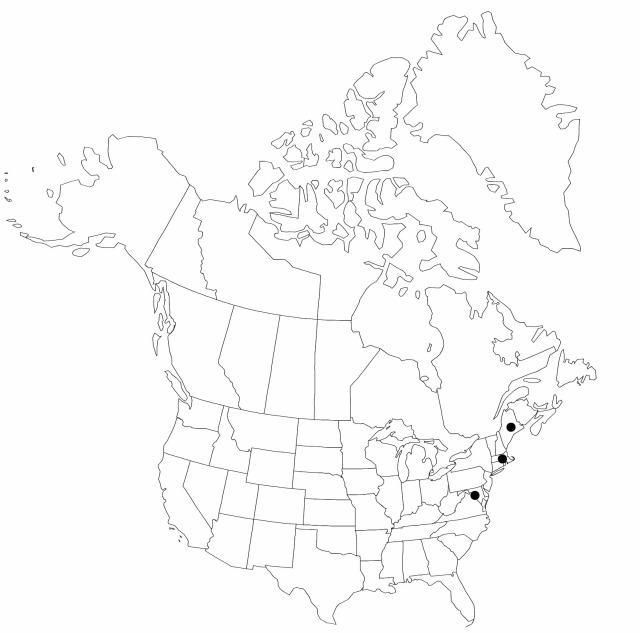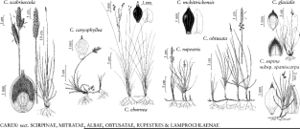Difference between revisions of "Carex caryophyllea"
Chlor. Lugd., 27. 1785.
imported>Volume Importer |
imported>Volume Importer |
||
| Line 61: | Line 61: | ||
|publication year=1785 | |publication year=1785 | ||
|special status=Introduced;Illustrated | |special status=Introduced;Illustrated | ||
| − | |source xml=https:// | + | |source xml=https://bitbucket.org/aafc-mbb/fna-data-curation/src/2e0870ddd59836b60bcf96646a41e87ea5a5943a/coarse_grained_fna_xml/V23/V23_1051.xml |
|genus=Carex | |genus=Carex | ||
|section=Carex sect. Mitratae | |section=Carex sect. Mitratae | ||
Latest revision as of 20:38, 5 November 2020
Culms trigonous, angles obtuse, 4–35 cm, scabrous distally. Leaves basal; sheath fronts with apex concave to V-shaped, glabrous; blades 7–25 cm × 1.5–3 mm, shorter than culm. Inflorescences 2–4 cm; proximal bracts to 5 × 1 mm; spikes crowded; lateral spikes 0.5–1.5 cm × 4–5 mm; terminal spikes 1–2 cm × 4 mm. Scales brown with yellow-brown midrib, 3-veined, equaling perigynia, apex acuminate to retuse, with scabrous awn to 2 mm. Anthers 2–3 mm. Perigynia yellow-brown, often red-brown at apex, sides convex, 2.5–2.8 × 1.5 mm, hairs purple-brown (hair-base bulbous); beak red-brown, conic, thickened. Achenes brown, sessile, mitrate, obovoid, 2–2.2 mm. 2n = 58, 62, 64, 66, 68 (Europe, Japan).
Phenology: Fruiting Jun.
Habitat: Dry pastures, graveyards
Elevation: 0–100 m
Distribution

Introduced; D.C., Maine, Mass., Eurasia.
Discussion
Carex caryophyllea is widely distributed in Eurasia and was first recorded in North America in 1826. Carex caryophyllea may escape notice because it somewhat resembles C. pensylvanica in size, habit, scale color, perigynia pubescence, and flowering time. Carex caryophyllea is distinguished by awned scales, perigynia with thick conical beaks, mitrate achenes, and enlarged persistent style bases.
Selected References
None.
